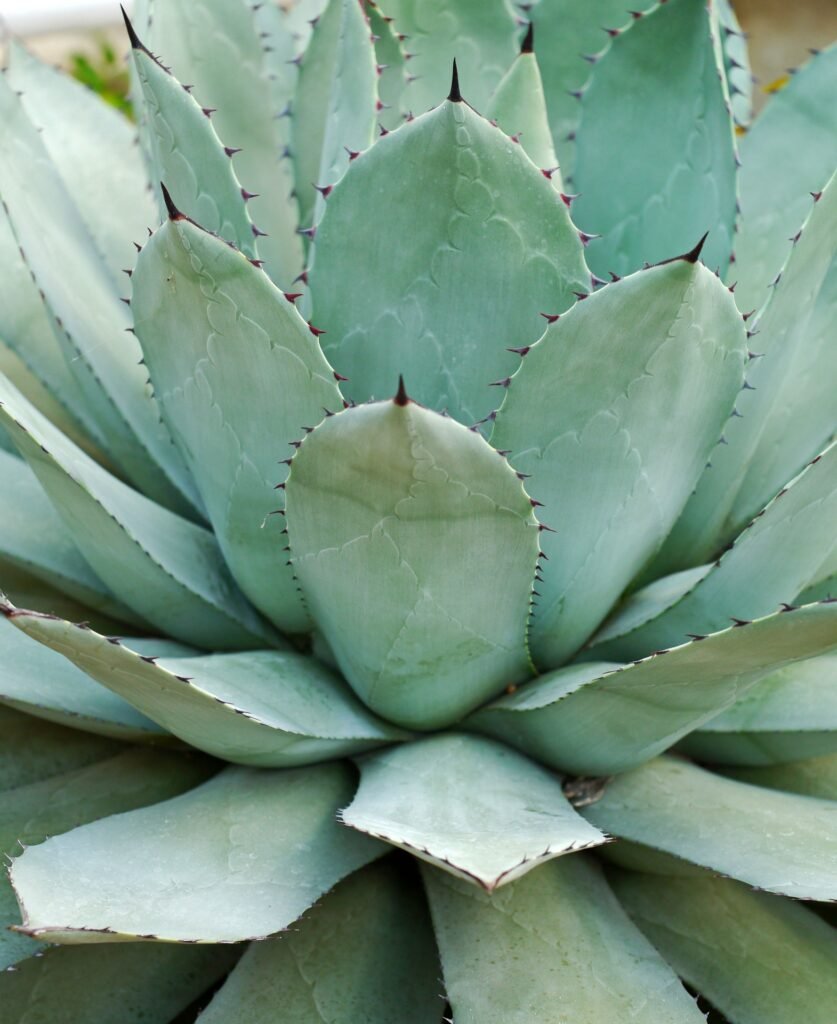
Introduction to Growing Agave
The word Agave comes from the Greek word ‘Agauos’. Agauos means ‘Illustrious’.
Agave includes over 200 species of the family Asparagaceae and is native to arid and semiarid regions of the Americas. Agauos is found mostly in Mexico, and the Caribbean.
Agave plants look like a rosette of succulent or leathery leaves. The plants vary in height from a few centimeters to several meters tall. The plants vary in height based on the species and where they are planted.
Characteristics
Agave plants are incredibly adaptive, thriving in harsh, sun-drenched environments with minimal water, thanks to their ability to store moisture in their thick leaves. Most bear spines along the edges and the tip of the leaf, for which they are occasionally confused with unrelated cacti. The leaves range in color from pale green to blue-grey and can be variegated or striped. Many species can reproduce vegetatively and generate clonal rosettes at the base of the main stem or nearby via underground rhizomes.
Uses and Benefits
Agave plants have a long history of ethnobotanical importance, especially to the peoples of Mexico, where the genus is most diverse. Many species have strong fibrous tissue in their leaves, which makes them useful for ropes, brushes, sandals, nets, sleeping mats, and other similar items. The agave plant is also used in the preparation of traditional alcoholic drinks like tequila and mescal. Pulque is a sweet alcoholic juice made from the flower stalk.
Agave nectar, a syrupy sweetener, is primarily sourced from the century plant, or maguey (A. americana), and blue agave. Agave syrup can be used as an alternative to regular sugar as it’s 1.5 times sweeter than table sugar. If you are a vegan, then you can try it in place of honey.
Growing Agave also offers ecological benefits, providing a habitat for wildlife and aiding in soil erosion prevention. It’s also a low-maintenance plant, making it a great choice for both indoor and outdoor landscaping.
Drawbacks
Despite its many benefits, Agave is still a sweetener and there are health risks involved with its consumption. Consuming too much agave can lead to problems with heart health, weight management, and teeth health. Therefore, you should use Agave sparingly and only once in a while.

Conclusion
The Agave plant is a symbol of the arid Americas and a plant of great utility and significance. Its uses range from the production of sweeteners and alcoholic beverages to providing ecological benefits. Therefore, Agave nectar should be used in moderation to avoid potential health risks.
Related Reading
Foraging and Harvesting Wild Agave – Sustainable Practices and Techniques – https://discover.texasrealfood.com/wild-edible-plants/wild-agave
How to Grow and Care for the Century Plant By Erica Puisis – https://www.thespruce.com/century-plant-growing-guide-5204162
Agave Americana (Century Plant) – https://www.thespruce.com/century-plant-growing-guide-5204162

Leave a Reply